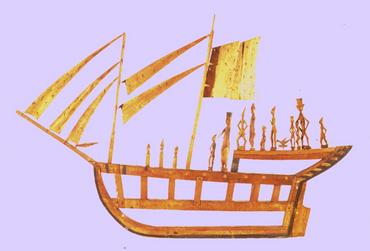The Galathea Expedition 1845-1847

In 1845, the corvette Galathea left Copenhagen’s harbour for a 26-month circumnavigation of the globe, the first of its kind to be equipped and organised from Denmark. The purpose was to conduct scientific studies and to secure Danish trade relations and friendship agreements with foreign nations, especially China. This kind of large-scale and combined scientific and naval expeditions had also been conducted by other contemporary nations, and one of the most famous is the British Beagle expedition (1831-1836) during which Charles Darwin gathered some of the evidence for his seminal book on the origin of species. In India, the two Danish trading stations, Tranquebar in south India and Frederiksnagore (Serampore) in Bengal, were to be officially handed over to the British East India Company. The voyage came to be known as the first Galathea expedition. It was led by Captain Steen Bille, and on board were well over 200 people. Among these were a small group of zoologists, botanists, and geographers with their assistants as nominated by the Danish Royal Academy of Sciences. On board were also a few artists who would assist the scientists to register and depict plants, animals, and objects from the visited areas, as well as try to artistically capture the atmosphere among the various people that the expedition visited en route. The object of the present publication is Steen Bille’s travelogue from the expedition and how he enumerated differences and similarities among the different people he encountered during the circumnavigation of the globe. In his travel account he presents a historically-specific typology of the cultural otherness he identified. His portrayal can be read as a concrete example on the evolutionary world view of the 19th century. In his account he lists differences and similarities among the Europeans and the foreign people he visited, and he organised the cultures on a linear social ladder starting with the so-called primitives at the bottom and the so-called civilized Western world at the top.
Fihl, Esther. (2011). “A journey through civilisation and primitiveness”, in Esther Fihl (ed.), Tranquebar Initiativets Skriftserie, no. 10. Nationalmuseet.
